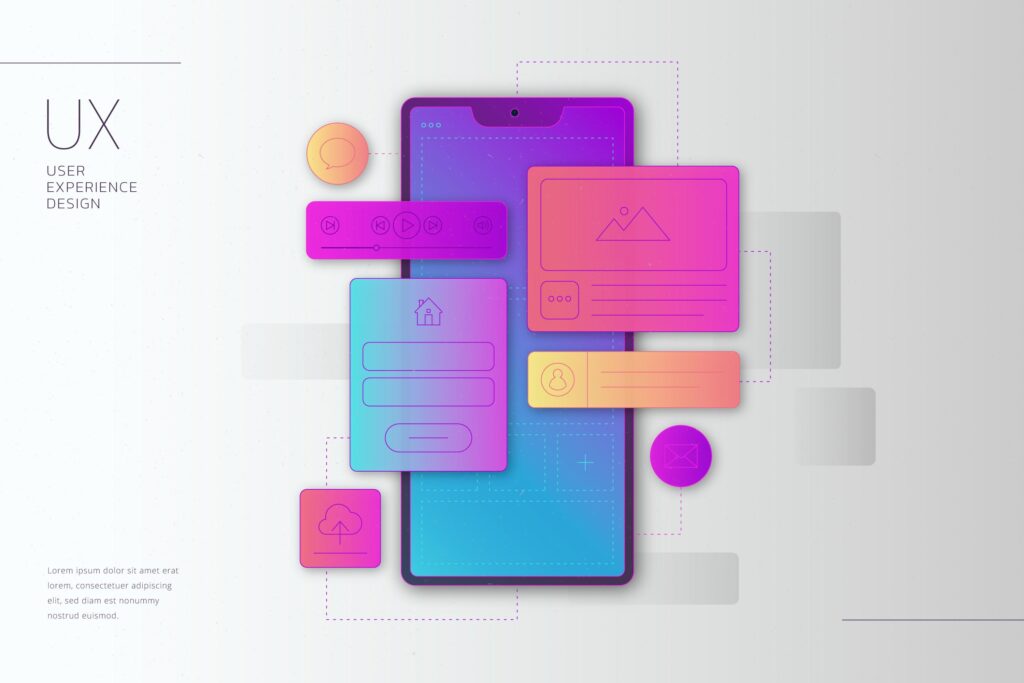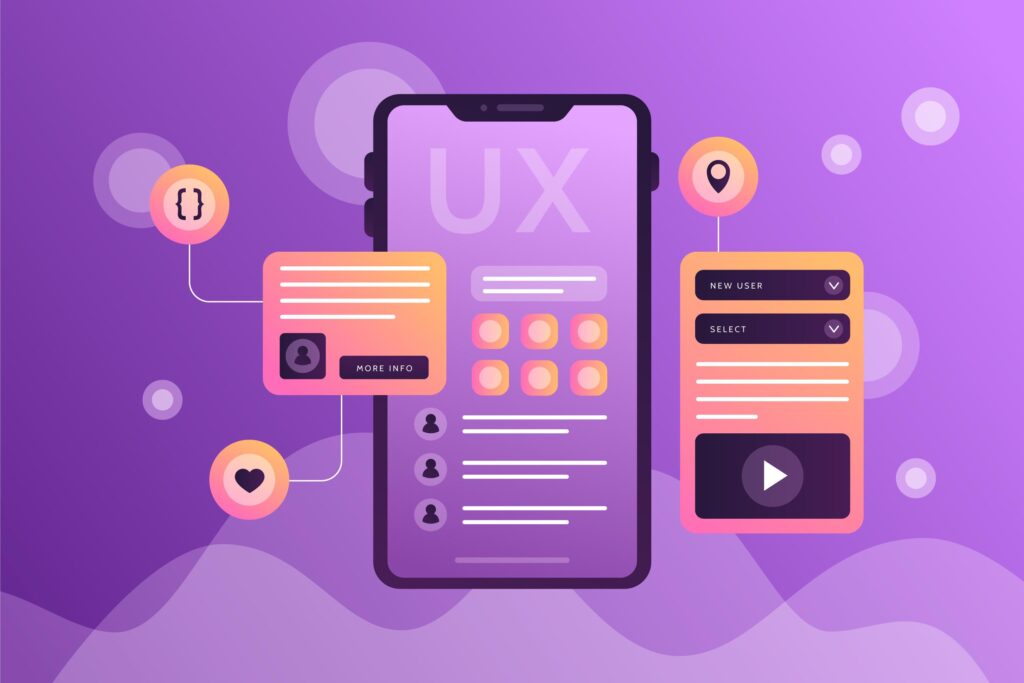Table of Contents
In 2024, your website is more than just a sales channel, it’s how potential customers find out about your business, communicate with it, and create an image about how they perceive your brand!
Optimizing your website is essential for your business, as e-commerce sales are expected to account for 20.8% of retail sales worldwide.
So if you want to increase your sales, here are the top 7 UX Design Features that your website should have:

1) Create a mobile-friendly UX design
With the increased use of smartphones and tablets, every search can be a chance for you to increase your sales, so creating a mobile-friendly design is essential! Studies show that 60% of internet access is made from mobile devices. Imagine the size of audiences you’d lose if your website isn’t mobile-friendly.
Make sure your website optimizes larger touch points, such as buttons and links, so users can browse easily through touchscreens. But this doesn’t mean ignoring desktop users! Prioritize designing your website for mobile users first, then consider enhancing the design for larger screens like desktops.
2) Make sure your website is accessible to everyone
How do you think someone would feel if they weren’t able to interact with certain websites? Yes, they’d be frustrated!
Studies show that 1 in 6 people worldwide experience significant disability, which makes accessibility a top priority for UX designers as everyone should be able to view and interact with your website, including anyone with any disability!
Utilize assistive technologies such as screen readers and keyword navigation tools to help you build a more accessible website. Make sure your website follows Web Content Accessibility Guidelines (WCAG) to ensure your website features are accessible to all users.
3) Optimize your website performance

Nothing is more frustrating than a slow website! Users expect a fast-loading page and an efficient website, so you should ensure that your website meets their expectations by lowering page loading times and compressing images. Minify HTML, CSS, and JavaScript files to reduce file sizes and speed up your website’s loading speed. Remember that a fast website can help you keep your users engaged, which will definitely increase your website’s conversions.
4) A minimalist UX design always wins

Minimalism is the trend! Never forget the principle that “less is more”. Focus on using essential elements and avoid clutter to further highlight your values and core messages. Simplicity will help you provide a more user-friendly experience, which will result in more conversions.
5) Use a user-centered UX design approach
Studies show that 88% of users are less likely to return to a website after a bad experience, but what defines a good experience from a bad one? Well, it all comes down to your target users.
Users should be your top priority when designing your website, make sure you use a user-centered design approach to emphasize on your users’ preferences and make use of their behaviors to make a design tailored for them.
Before designing your website, you should always conduct customer research to gain more understanding about your users’ needs and pain points. This will help you design a website that is efficient, gets you sales, and they get to enjoy.
6) Improve your UX design with consistency
If your goal is to improve user experience and brand recognition, then consistency is your secret weapon! Your website design should make all elements and interactions similar to provide your users with a familiar experience.
We advise you to always make sure your website is visually consistent through using a consistent layout, using similar typography across the website and using a color scheme that aligns with your brand. Also make sure your website is functionally consistent by testing the navigation patterns and all interactive elements such as buttons and links to make sure they behave consistently.
7) Cross-platform compatibility is a must
What’s more important than the ability to access a website from any device or browser? If your users can’t access your website, then you’ve lost them! Ensure that your website runs seamlessly on different operating systems and devices through cross-platform compatibility testing. Whether your users browse from a desktop, iPhone, Android, or even a tablet, make sure your website looks the same on different screen sizes and browsers to allow you to deliver a consistent experience to all users across all devices.
Enhancing your UX design is not a one time thing! It’s an ongoing commitment that needs regular optimization to provide your users with the best experience possible. Technologies keep on evolving and so does user behavior!
To know more about UX and how to avoid poor UX, read this article: UX Marketing: Is it important?! – Your Ultimate Guide to avoid Poor UX!



